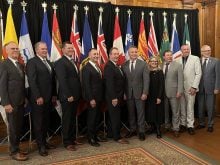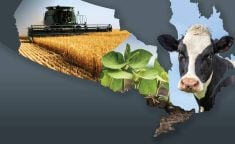Canadian farmers are fed up with governments failing to fix AgriStability, says Chris van den Heuvel, second vice-president of the Canadian Federation of Agriculture (CFA) and a Nova Scotia farmer.

“We’re relying on programs that are ineffective, untimely and not impactful,” he said in an interview March 5. “We have been bringing this forth continuously with successive ministers. It’s really discouraging when every time we bring it up it seems to get punted down the road further. They need to study and then they come back in six months and say we need another study and so on and so forth.
“We’ve see declining enrolment (in AgriStability) and farmers are at a tipping point. “It has been successive years of extremely bad crop situations.”
The situation is compounded by trade disputes that have cut canola exports and prices, and disruptions in moving grain to export by train due to bad weather, a CN Rail strike and rail blockades to protest a British Columbia gas pipeline.
Read Also

Journal pulls long-cited glyphosate study for ethics violations
The journal Regulatory Toxicology and Pharmacology has retracted a 2000 Monsanto-linked glyphosate review, drawing new scrutiny as Bayer faces mounting legal pressure.
“Again due to things that are completely beyond our control and have nothing to do with the agricultural industry.”
Some farmers are so fed up they want to scrap AgriStability, van den Heuvel said. That’s a longer-term approach, he added.
“In the immediate short term we need some relief for our farmers,” van den Heuvel said.
“There’s some midterm relief that’s a very easy fix. The government could… very easily move that AgriStability reference margin limit back up to 85 per cent and get rid of the reference margin limit.”
Longer term AgriStability could be replaced, he added, but it’s unlikely given it’s year three in the five-year federal-provincial Canadian Agricultural Program.
The Harper government cut AgriStability’s trigger in 2013 to save money, van den Heuvel said.
And Canada can invest that money and stay within international trade rules, van den Heuvel said.
“When you look at what the government is allowed to provide in domestic support it’s somewhere up to around $4.3 billion for what they call amber box programs,” he said. “Currently our federal government only spends about $625 million to $650 million (a year).
“There’s a lot of room.”
















